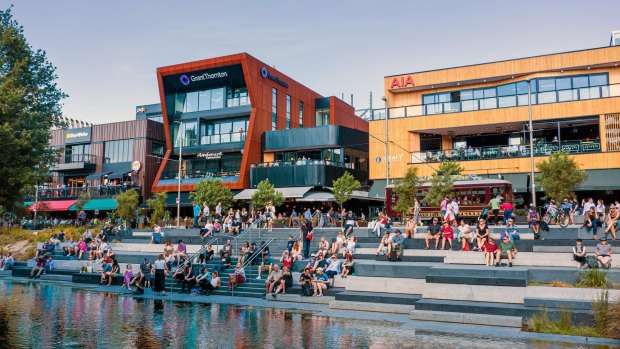This was published 1 year ago
Christchurch 2011 earthquake: City's comeback makes it one of the world's most pleasant
By Lee Tulloch

Christchurch has rebuilt itself as a city that works for people, not just bureaucrats.
The earthquake that shattered parts of Turkey and Syria early this month has created a humanitarian crisis on a scale that is unfathomable.
It's a massive task to house the displaced, rebuild structures and heal families suffering immense shock and sorrow.
While not on the same scale, the earthquake that struck Christchurch on New Zealand's South Island in 2011 caused unimaginable damage to the small colonial city. The human cost was terrible, with 185 deaths and almost 7000 injuries in the first 24 hours. Eighty per cent of the city's buildings turned to rubble, with 100,000 homes and hundreds of historic structures destroyed or badly damaged.
The task of rebuilding seemed unsurmountable then.
Twelve years on, the scars of the earthquake are still visible in parts of the city and there are construction sites and cranes scattered around the downtown metropolis. The famous cathedral hasn't been completely restored yet.
But the extensive community, scientific and international consultations about the best ways to rebuild, and more than 700 transitional projects, have resulted in something phenomenal - a city that most citizens agree is better than it was before.
I briefly visited Otautahi/Christchurch for the first time recently, the week that the North Island was suffering from a different kind of disaster, Cyclone Gabrielle.
Christchurch's re-emergence as one of one of the world's most pleasant, liveable and vibrant cities gives hope to other regions suffering catastrophic weather events, which have become more frequent due to climate change.
In the place of the shipping containers brought in as temporary facilities, cultural centres, theatres, children's playgrounds, a new hospital, law courts, and a convention centre have arisen, either restored, rebuilt or newly conceived.
"It's almost as if you're a child growing up again because everything's so new," says Stu Waddel, owner of Chill Explore (chillout.nz), a company that specialises in small group bike and walking tours around the city.
We're walking at a brisk pace to take in as much of the architecture as we can in three hours, including the Arts Centre Te Matatiki Toi Ora, a hub of 22 heritage education buildings that were badly damaged in the earthquake and are gradually being restored. The beautiful Gothic Revival buildings include cloisters, an art gallery, and a chic new boutique hotel, the Observatory, in the old Physics building.
Everywhere we walk, Stu points out street art, which has flourished during the rebuild and is now celebrated with the FLARE street art fair. The art is provocative and fresh, livening up the facades of Christchurch's eclectic mix of modernist, renaissance, gothic and brutalist architecture.
The thoughtfulness put into planning a city that works for people, not just bureaucrats, means that the new shopping precinct in the CBD opens to laneways, which in turn flow towards the Avon/Otakaro river and gardens, the promenade lined with restaurants and bars.
What I love most is that at the heart of the new city is the magnificent new Turanga central library, which has a great cafe that's a popular meeting place, seamlessly flowing into Cathedral Square.
It's hard to put my finger on what other cities Christchurch reminds me of. There's a bit of Adelaide, in the river that snakes through the city, with its grassy banks, ducks, iron bridges, punts and crystal-clear water.
There's a touch of Copenhagen in the bike paths and some of the newer residential buildings painted bright colours, surrounded by edible community gardens. And in its calm, with interval traffic system that keeps the traffic flowing smoothly and quietly.
There are lessons learned from Melbourne in the lanes and alleys that have been created between new buildings in the civic centre, which protect against the weather and are lined with bars, shops, food outlets and bookstores. It has vintage trams that circle the city with tourists.
The Riverside Market, a covered market full of food stalls and enticing aromas, is a smaller version of the wonderful markets in Madrid and Lisbon. And then there's New Regent Street, the "Spanish" street with colourful facades, cafes and quirky little shops, which withstood the quake and has been restored.
I can't imagine what it must be like to have everything you know flattened by an earthquake, but the reimagining of Christchurch shows it's possible to emerge from the rubble a better place, particularly if you consult the people who live in it.
Instagram: @bymrsamos
Sign up for the Traveller Deals newsletter
Get exclusive travel deals delivered straight to your inbox. Sign up now.